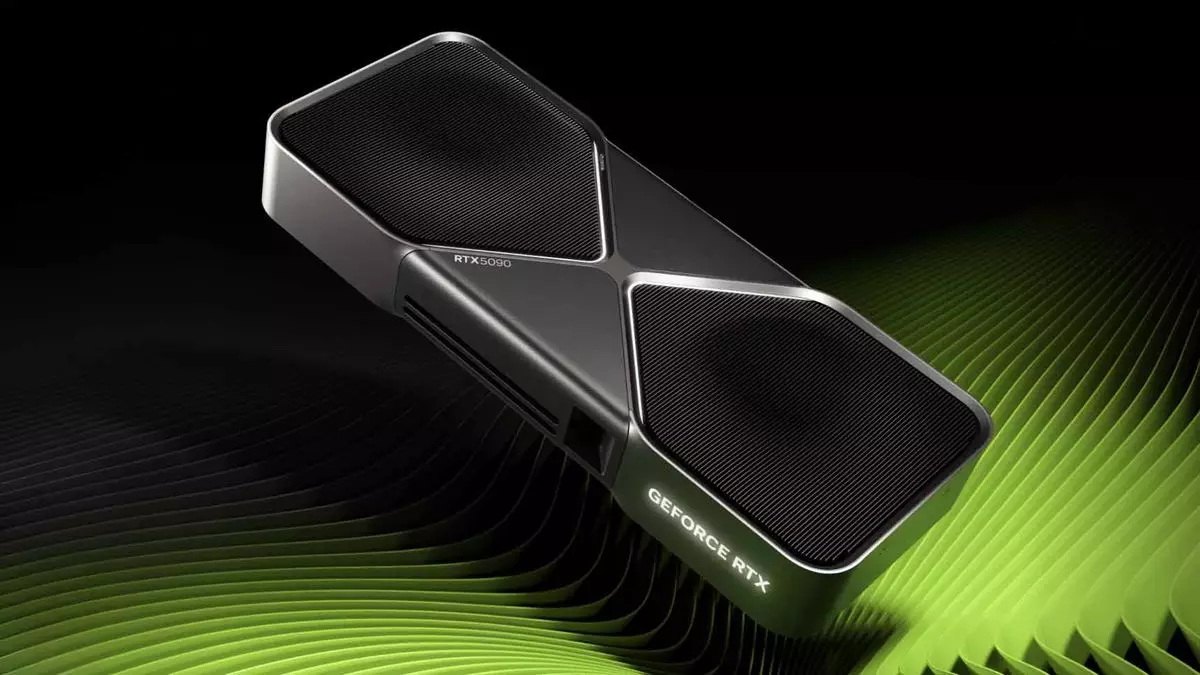The upcoming Nvidia RTX 5090 is the subject of considerable speculation and discussion in the tech community, especially following the recent leak of what appears to be an engineering sample featuring Nvidia’s GB202 GPU. This new architecture is purported to boast an impressive 24,576 CUDA cores, representing a noted increase from the anticipated 21,760 cores found on the retail variant. As excitement churns among enthusiasts, one must critically examine both the implications of this leak and the future of Nvidia’s graphics solutions.
The leap from 21,760 to 24,576 CUDA cores is undoubtedly substantial—a 13% increase that could translate into significant performance improvements in tasks such as gaming and rendering. The additional cores should enable the GPU to handle more parallel processes, greatly enhancing efficiency in compute-heavy applications. The engineering board also incorporates 32 Gbps GDDR7 memory, surpassing the 28 Gbps GDDR6X utilized in its predecessor, the RTX 5090. This shift promises to provide a bandwidth increase from 1,792 GB/s to an impressive 2,048 GB/s, allowing the GPU to manage the heightened throughput.
However, one should temper excitement with cautious skepticism. The existence of engineering samples such as this one often does not mean the final product will deliver in a similar capacity. Nvidia’s history suggests that it may choose to hold back on unlocking the full potential of its GPUs to maintain market competition and product hierarchies.
The landscape of the high-end GPU market reveals an intriguing paradox regarding Nvidia’s strategies. The RTX 4090 has already demonstrated great power, showcasing 16,384 CUDA cores, which is considerably less than the rumored capabilities of the 5090—if fully realized. Past revelations about potential 4090 Ti variants that were never released bolster this narrative. They illustrate that Nvidia may possess the technology to innovate further but often opts to remain conservative in the face of competitive pressures or the seeming lack thereof. Given that AMD’s recent RDNA 4 architecture is not aggressively vying for high-end dominance, it poses the question of whether Nvidia has any incentive to unleash the RTX 5090 in its entirety.
This reserved approach might elicit frustration among consumers. With various tech channels expressing disappointment in the RTX 5090’s specifications, it begs the query: how can Nvidia amplify enthusiasm for a product with tepid market reception? A potential route would involve launching a high-performance variant, be it a 5090 Ti or a Titan card emblazoned with the full capabilities of the GB202 GPU.
The prevailing sentiment among the gaming and tech communities underscores the importance of staying attuned to consumer expectations. Nvidia finds itself in a critical position; failing to meet the high standards expected for the RTX 5090 could yield detrimental effects on its brand reputation. Although the engineering prototype reflects the GPU’s possible prowess, if the consumer-ready product does not match these projections, there could be widespread disillusionment.
Moreover, Nvidia’s history of releasing cut-down models raises concerns about the actual performance metrics users can expect. There is an increasing chorus of apathy regarding the RTX 5090 specifications, and delivering a derivative product with less-than-anticipated performance could propel customers to seek alternatives.
As Nvidia stands on the precipice of a potentially groundbreaking release with the RTX 5090, it must carefully navigate the landscape of consumer expectations and market dynamics. The engineering samples may indicate the GPU’s incredible capabilities, but they serve as a reminder of the disparity that can exist between prototype and production.
The anticipation surrounding the RTX 5090 indicates that enthusiasts and casual gamers alike are yearning for innovation that transcends mere incremental upgrades. Should Nvidia choose to unleash the full capabilities of its new architecture or introduce a high-performance tier variant, it has an opportunity to mitigate dissatisfaction and reaffirm its dominance in the graphics card arena. Ultimately, the challenge remains to balance transformative technological advancements with strategic market considerations.

